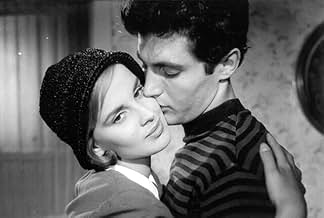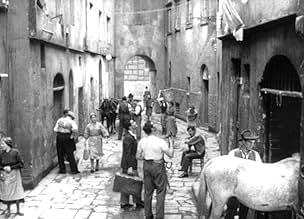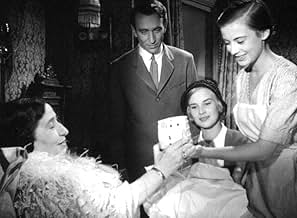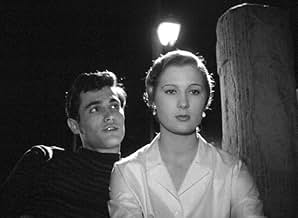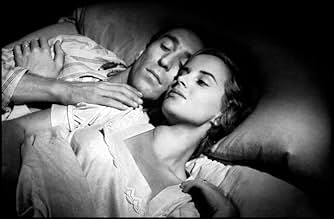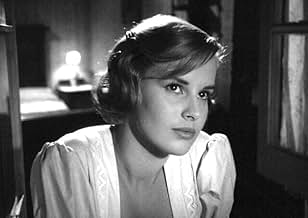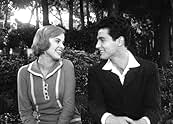Nel 1925 il giovane tipografo fiorentino Mario si trasferisce in via del Corno per stare vicino alla sua fidanzata Bianca.Nel 1925 il giovane tipografo fiorentino Mario si trasferisce in via del Corno per stare vicino alla sua fidanzata Bianca.Nel 1925 il giovane tipografo fiorentino Mario si trasferisce in via del Corno per stare vicino alla sua fidanzata Bianca.
- Premi
- 4 vittorie e 1 candidatura in totale
Trama
Lo sapevi?
- QuizThe film met with vehement opposition from the Italian government and was banned from export after it received the Special Jury Award at Cannes.
Recensione in evidenza
This movie could probably have been a successful production, if it was realized in a different way, but the emphasis in which nearly all characters are over-stating themselves throughout its length makes it somewhat slow and uninteresting.
As it often happens with adaptation of literary works for the silver screen, the style of this movie is rather different from that of the novel from which is taken, but the atmosphere of the working-class neighborhood in the Florence of mid-1920s is quite well rendered.
The cast too is full of very good players, both famous or soon-to-be famous, like Mastroianni, Ferrero, Lualdi and Greco, and remarkable features by some lesser known but noteworthy presences such as Giuliano Montaldo (which later will acquire his own fame as movie director), and Wanda Capodaglio, unrivaled queen of the Italian stage for nearly 50 years, who plays the unnamed "Lady Loanshark".
Adolfo Consolini, a famous Italian athlete, twice world record holder and 1948 Olympic champion of discus throw, very appropriately lends his well-built body to the character of Maciste.
The only action sequence of this movie, with Ugo and Maciste trying to reach the houses of some anti-fascists and warn them before the violent mob gets there first, is very nailing and well made. Too bad the rest of the movie is not as entertaining as it could have been.
If you are interested in the history of Italian movies and contemporary literature, try watching this one, but only after reading the novel.
As it often happens with adaptation of literary works for the silver screen, the style of this movie is rather different from that of the novel from which is taken, but the atmosphere of the working-class neighborhood in the Florence of mid-1920s is quite well rendered.
The cast too is full of very good players, both famous or soon-to-be famous, like Mastroianni, Ferrero, Lualdi and Greco, and remarkable features by some lesser known but noteworthy presences such as Giuliano Montaldo (which later will acquire his own fame as movie director), and Wanda Capodaglio, unrivaled queen of the Italian stage for nearly 50 years, who plays the unnamed "Lady Loanshark".
Adolfo Consolini, a famous Italian athlete, twice world record holder and 1948 Olympic champion of discus throw, very appropriately lends his well-built body to the character of Maciste.
The only action sequence of this movie, with Ugo and Maciste trying to reach the houses of some anti-fascists and warn them before the violent mob gets there first, is very nailing and well made. Too bad the rest of the movie is not as entertaining as it could have been.
If you are interested in the history of Italian movies and contemporary literature, try watching this one, but only after reading the novel.
I più visti
Accedi per valutare e creare un elenco di titoli salvati per ottenere consigli personalizzati
Dettagli
- Data di uscita
- Paese di origine
- Lingua
- Celebre anche come
- Chronicle of Poor Lovers
- Luoghi delle riprese
- Firenze, Toscana, Italia(street scenes Via del Corno)
- Azienda produttrice
- Vedi altri crediti dell’azienda su IMDbPro
- Tempo di esecuzione1 ora 47 minuti
- Colore
- Proporzioni
- 1.37 : 1
Contribuisci a questa pagina
Suggerisci una modifica o aggiungi i contenuti mancanti

Divario superiore
What is the English language plot outline for Cronache di poveri amanti (1954)?
Rispondi
